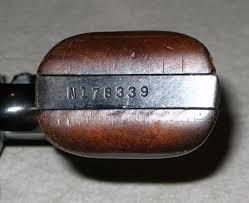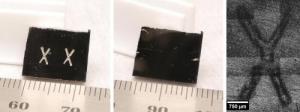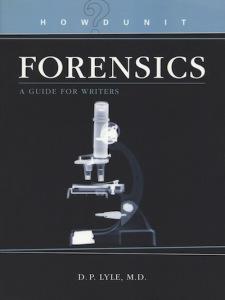
Serial numbers on firearms offer investigators a reliable method for tracing ownership. To avoid this connection, criminals will often attempt to obliterate these by scratching, gouging, and grinding the numbers away. Or at least damaging them so that they become unreadable.

There are many techniques for restoring such numbers. Things like acid or electrical etching, magnaflux, ultrasonic cavitation. But these techniques don’t often work and some can damage the evidence. (See Below)
Now those clever folks at the National Institute of Standards and Technology (NIST) have developed a new method: Crystal Pattern Mapping. This technique employs a Scanning Electron Microscope (SEM) and reads the electron backscatter diffraction (EBSD), which reveals the obliterated numbers.

An intriguing and useful new tool for the forensic scientist.

From HOWDUNNIT: FORENSICS:
RESTORING SERIAL NUMBERS
Sometimes it’s obvious that a particular gun was the murder weapon. It is found at the crime scene, along the perpetrator’s escape route, or where it was discarded, and the forensic fi rearms examiner matches the gun to the bullets removed from the victim. But that information doesn’t identify the gun’s owner or who fi red it. In this situation it is useful to discover if anyone had registered the gun. Even if the registered owner is not the killer, he might have given the gun to someone, or it might have been stolen and the murder and the gun theft can be linked. Comparing the evidence in the two cases would move the investigators closer to identifying the perpetrator.
But criminals are clever. They often attempt to grind or file away the gun’s serial number in the hopes that the weapon can’t be traced. If so, the examiner has a few tricks he can employ in these situations.
The most common are magnaflux, chemical and electrochemical etching, and ultrasonic cavitation. Each relies on the changes in the structure of the gun’s metal that follows the serial number stamping process. When the metal is pressure-stamped, not only is the metal indented with the numbers, but also the metal beneath the numbers is stressed and undergoes structural changes.
MAGNAFLUX: This is only useful if the weapon is composed of iron-containing metals. The gun is placed in a strong electromagnetic fi eld or beneath a strong magnet, which magnetizes the weapon. The lines of magnetic force in a magnetized object usually run parallel to each other, but the disordered metal beneath the stamped numbers disrupt this order. The gun is then sprayed with a special oil in which iron-like particles are suspended. The particles tend to collect in the areas of disordered metal, thus revealing the hidden number. The major advantage of this process is it is nondestructive and doesn’t alter the weapon.
CHEMICAL AND ELECTROCHEMICAL ETCHING: These are destructive processes, which limits their use. They involve the painting of an etching solution over the area in question. The chemical eats the disordered metal faster than the surrounding metal, and thus brings the numbers into view. Adding an electric current (electrochemical etching) hastens the process. Either of these must be done carefully, since over-etching will destroy the evidence forever.
ULTRASONIC CAVITATION: This technique is similar to chemical etching and is also a destructive process. The gun is placed in a special ultrasonic bath and exposed to very high-frequency vibrations. This causes cavitation, a process in which tiny bubbles form along the surface of the metal. With continued exposure, the cavitation begins to eat away the metal. The process is fastest in the areas of disorder and, as with chemical etching, the serial number might be revealed.
